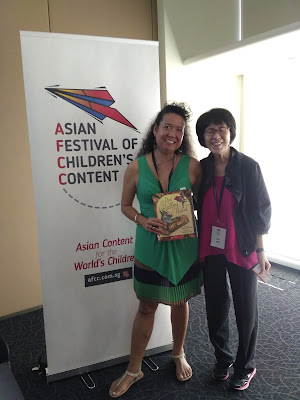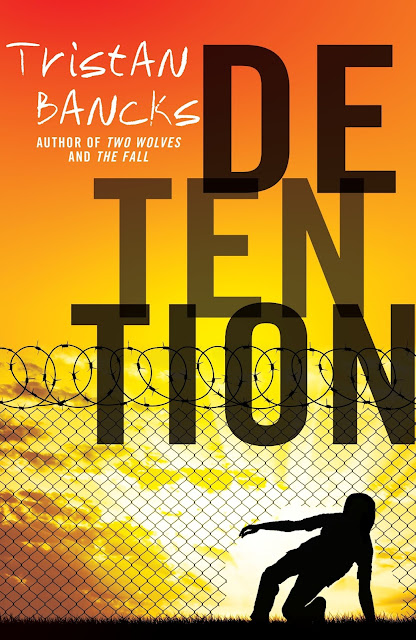What's a Postmodern Picture Book? AFCC Sessions Part 8
 |
| Me and Dr Ruth Wong |
Now although I consider myself a voracious and reasonably well-informed reader of picture books, the term 'postmodern' did befuddle me a little. It wasn't until I delved a little deeper into definitions that I realised, I had been savouring this style of picture book narrative for years. So what exactly is a postmodern picture book and what value do they represent for young readers. Ruth was on hand to explain.
Characteristics of Postmodern picture books:
- Directly addresses the reader, thus acknowledging readers as active agents of the reading process
- Offers an overt invitation to interact and play or involve the reader with the book, not just the story
- readers become participants (good for one on one reading)
- Emphasis on implications for teaching and allowing educators to appreciate learning through FUN
- Non-linear in design
- They are 'aware' of themselves as books and often include self-referential elements
- They can distance readers from the text, often frustrating traditional reading expectations, forcing readers to utilise more interpretive strategies in order to make sense of the text.
- Often sarcastic and cynical in tone
- Contain overly obtrusive narrators
- Contain narrative framing devices e.g. stories within stories
- May feature illustrations of a pastiche style
- Are PLAYFUL
With the emphasis on fun and reader involvement, creators of this style of narrative are able to educate children in a surreptitious, engaging and entertaining way. Dr Ruth provided plenty of examples, many you probably already love, for example, Wolves by Emily Gravett. One of the more recognisable is the recent Do Not Open This Book by Andy Lee, the premise of which has of course been done several times before, but is a joke in the eyes of youngsters that never grows old.
To ensure the audience understood the jokes and meaning behind this narrative style, Ruth then enlisted yours truly to demonstrate with an ad hoc reading session. They results were illustrated by David 'Wolfie' Liew, below (I was Little Red Riding Hood).
 Another favourite homegrown example is Deborah Abela's just released, Wolfie An Unlikely Hero - outrageously funny and one hundred per cent interactive.
Another favourite homegrown example is Deborah Abela's just released, Wolfie An Unlikely Hero - outrageously funny and one hundred per cent interactive. Not every postmodern picture book embraces each of the above characteristics of course but the minute you open one, you'll immediately recognise what sets it apart from its neighbours on the bookshelf. Use them to supplement your diet of picture books for the sheer joy of it. Their attention grabbing qualities speak for themselves, as it were 😝
For the final chapter on the Asian Festival of Children's Content 2017 and my own presentation, come back soon.




Comments